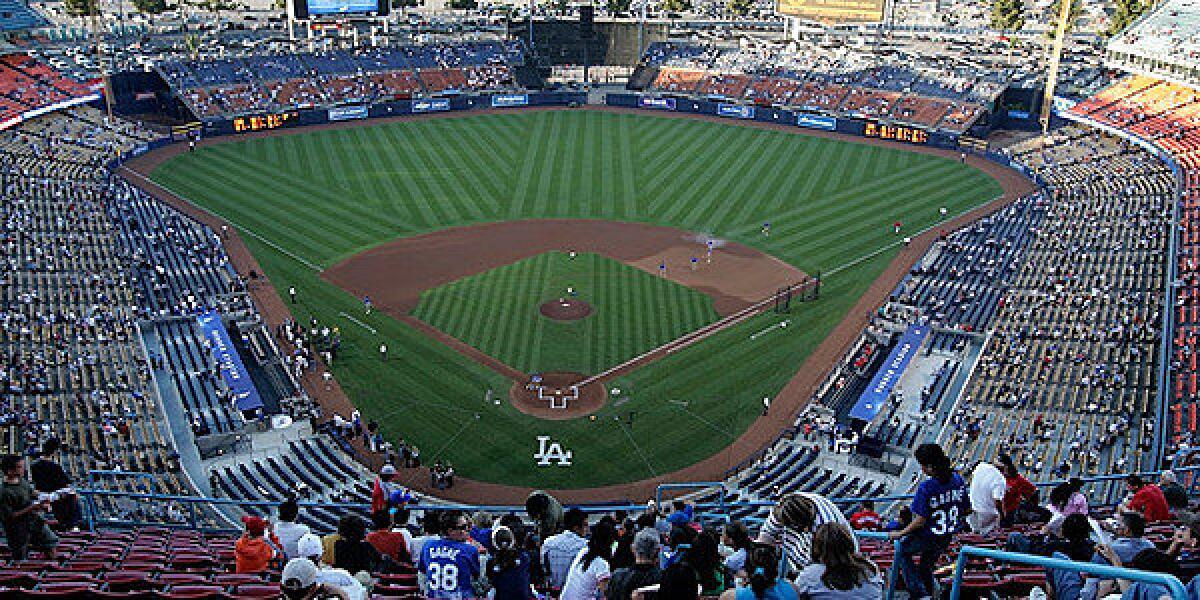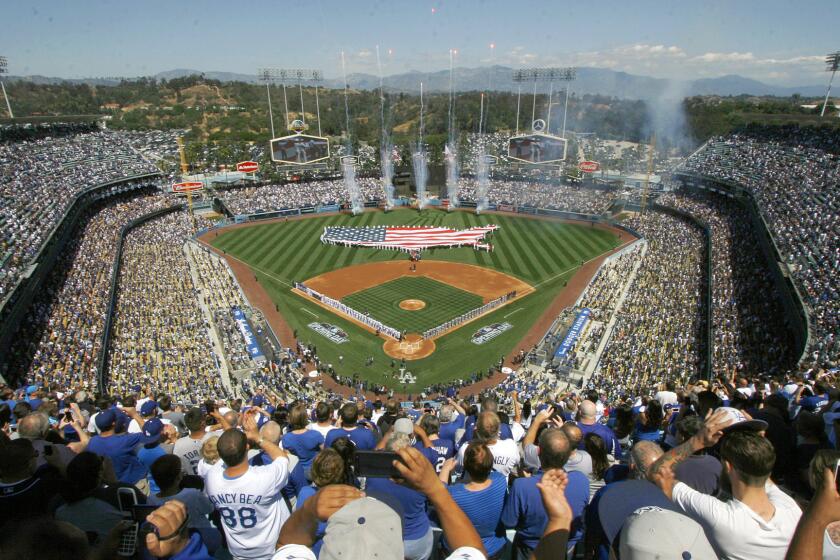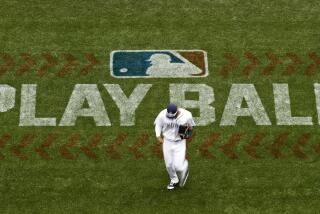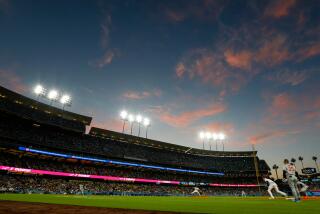Column: Dodgers, Angels ought to cultivate young fans by starting games earlier this season

If Major League Baseball can launch a 60-game season in late July — and that’s still far from certain because of recent COVID-19 surges in several states and players’ fears for their health — its return must be creative, fan-friendly and innovative.
Remind us why we fell in love with baseball. Show those who abandoned the game why it’s worth coming back, that the strategy and drama and rhythms of summer can be hypnotic. Create emotional connections that bring us closer even though we have to be physically distant, while fans are banned from stadiums and players are forbidden to give one another high-fives or walk-off home run hugs. Give us reasons to care.
The first step should be to make it easier for everyone to watch and ditch those 7 p.m. starts.
Television will dictate schedules because money talks and the prime push behind staging a shortened season amid this pandemic is that owners want to generate TV revenues to offset their losses at the gate. But the Dodgers and Angels should set their game times at 5:30 p.m. as often as possible. Five o’clock would be even better, but shadows on the field at Dodger Stadium at that hour pose a valid concern to players.
Start absolutely no later than 6 p.m. Maybe throw in more day games besides the afternoon games scheduled on getaway days. This is the perfect moment to get away from those 7 p.m. starts, which really mean the first pitch isn’t thrown until about 7:10 p.m. and regulation games can plod along until 11 p.m. or beyond. Make it more convenient and tempting to watch from first pitch to last pitch.
Fans in attendance at MLB games this shortened season is a possibility, according to the Operations Manual and other factors.
Our work routines have changed. Homes have become offices for many people. There’s no reason to delay the first pitch to accommodate fans leaving work, battling freeway traffic, and finding a parking space at the stadium because none of that will happen, at least initially. Work schedules are more flexible. Shouldn’t baseball change, too, and be more accessible to everyone?
Let’s see more sunlight while games are played. Let’s not have to turn off the TV in the seventh inning to get to sleep at a reasonable hour. Let’s make it easier, if you live on the East Coast or you’re traveling there, to watch West Coast games.
Dave Turley is president of the Conejo Valley Little League in Thousand Oaks, which Monday canceled its season because of the impact of the COVID-19 pandemic. His youngest son, 12-year-old Wyatt, just missed out on his season. His oldest son, 15-year-old Drew, is a catcher at Thousand Oaks High and on an elite club team. Nothing can replace the experiences they’ve lost, but watching baseball together at a relatively early hour would allow them to bond over baseball in a different but important way. And they’re not alone.
“It would be very good for them and for the family,” Turley said of his sons. “Not having baseball, it’s been a tough summer. Being able to sit around the TV when it’s normally our [Little League] game time, at 5 o’clock, would be a really welcome event for us, for sure.
“That way they’re not up until 10:30, 11 watching the Dodgers try and pull one out.”
Jim Steinhaus of Santa Rosa Valley said his son Eli, who also plays at Thousand Oaks High, is “desperate” to watch baseball again even though the 15-year-old pronounced it weird to have a 60-game season.
“He’s a sports maniac. His true passion has always been baseball. I think he’s tired of spending all his time playing ‘MLB: The Show’ on the PS4, and he’s ready for real baseball,” Steinhaus said, laughing.
“Having baseball on early in the day, people I think at this point will watch it if you put it on at 5 in the morning. They’ll wake up and they’ll do it.”
Starting games at 5:30 p.m. instead of 7 or 7:30, Steinhaus said, would be well-received even when fans are allowed into stadiums.
“It would be a great way to get fans back into it, to encourage more viewers and get them to taste it so when it’s safe to go back to the games, people will be more inclined to do so because they’ll have that experience,” said Steinhaus, co-owner of Cake Studios, which produces motion graphics and animation for sports teams’ in-arena presentations.
“If that’s at good hours, when they can watch with their kids and not stay up too late, that will encourage them to think about coming back when the stands are ready to be filled or partially filled with fans.”
Peter Massar of Mission Viejo grew up in Chicago when day baseball was as much a part of being a Cubs fan as disappointment at the end of the season. He’s trying to pass his love of the game to his kids, who are 6, 9, and 12, and he takes them to about 10 Angels games a year. “Most of the time we have to leave early because it’s getting late,” Massar said.
Earlier starts would let kids watch more of each game, even if they’re limited for now to watching on TV. “This would be a good opportunity to rope in younger fans, to get them into it when they have all this free time as well,” Massar said. “Especially if it starts at 4 o’clock in the afternoon and goes until 7 or 8. I would sit and watch it with them much more often and make it an event at home. Make popcorn and stuff.
“But if it starts at 8 o’clock or 7:30 or whatever, it’s time for homework, time for bed, time for other things and at best it’s on in the background.”
Turley believes MLB has an opportunity to appeal to a younger audience with elements like earlier starts and interactive technology. “I think it’s great that they’re trying to put a season out there, and that they’re going to,” he said. “Younger fans, they need to capture that base now.”
Starting earlier is a great way to do it.
More to Read
Go beyond the scoreboard
Get the latest on L.A.'s teams in the daily Sports Report newsletter.
You may occasionally receive promotional content from the Los Angeles Times.












